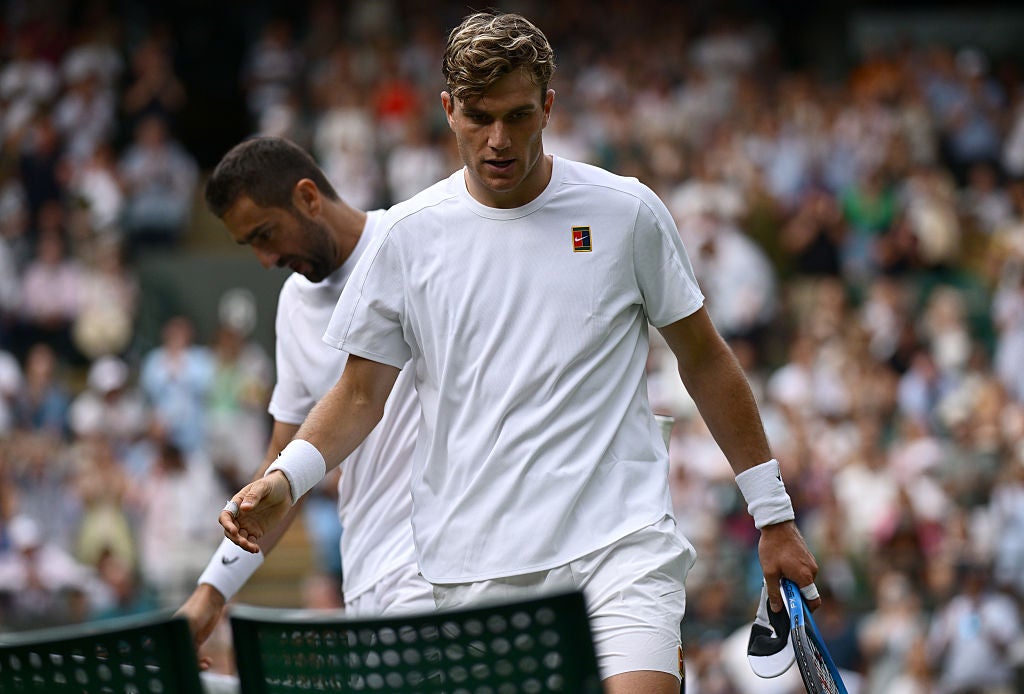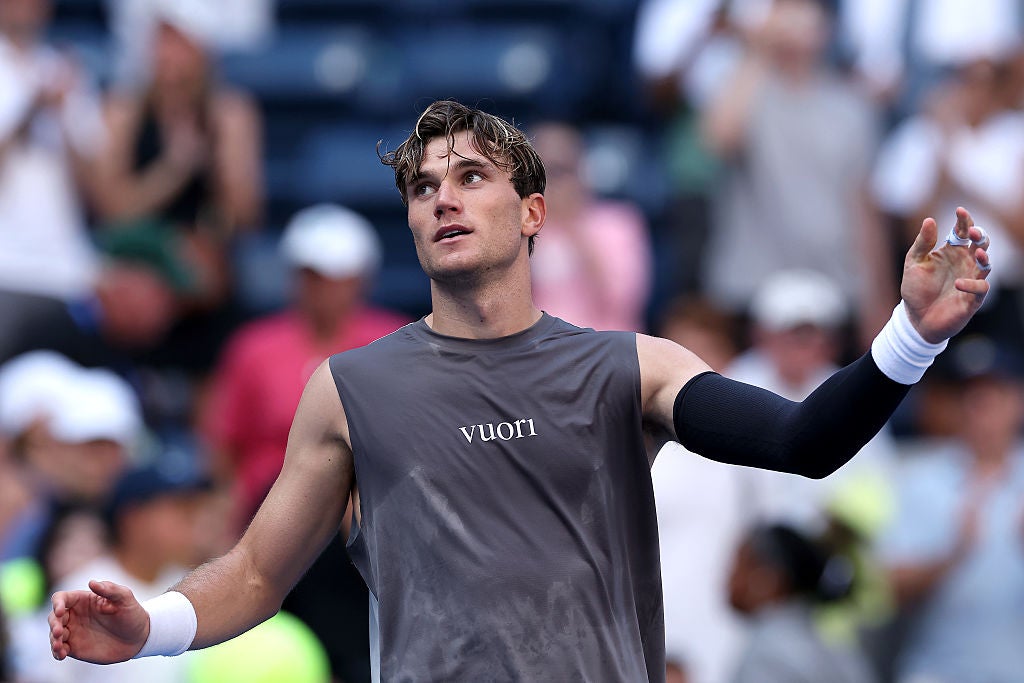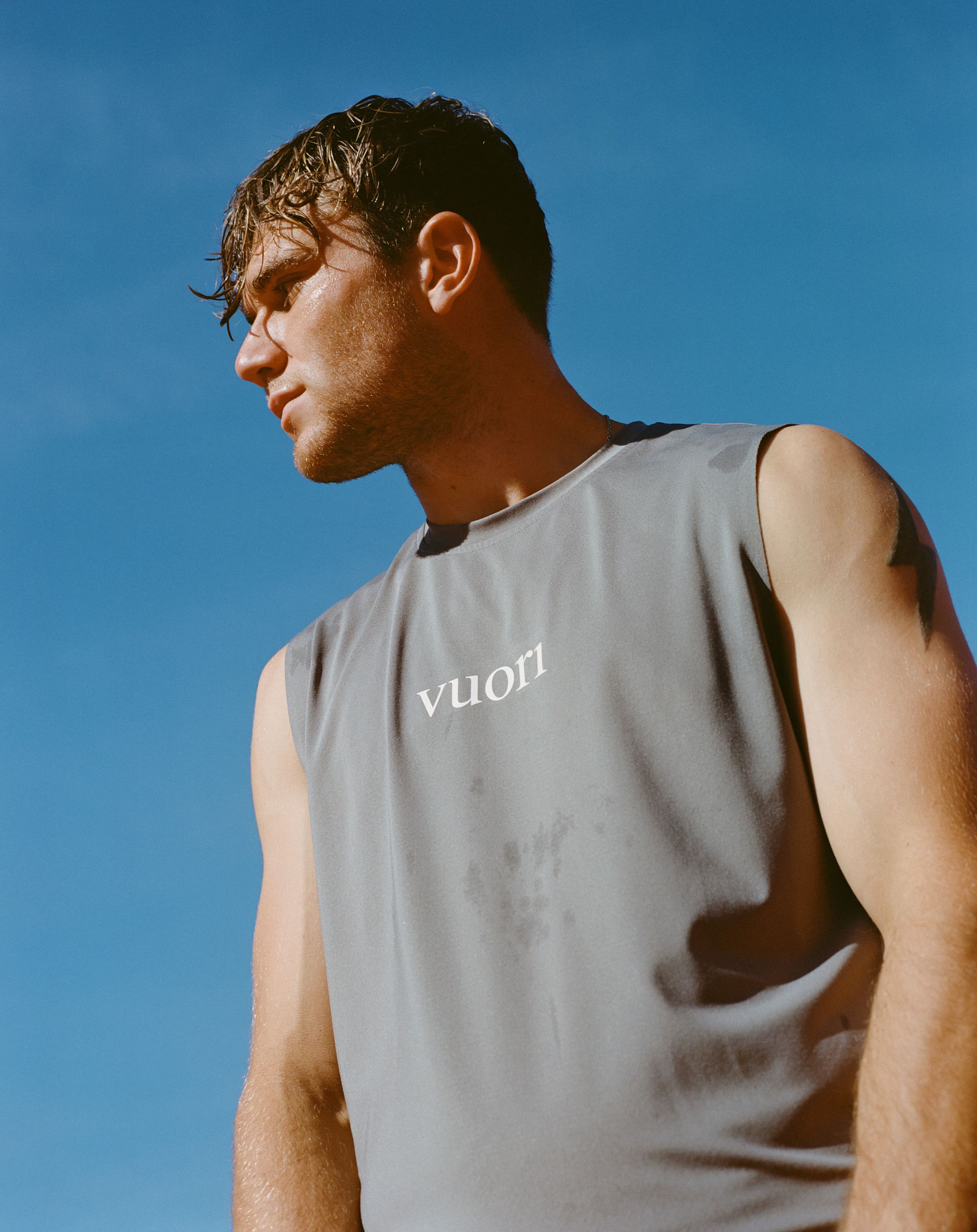Your support helps us to tell the story
From reproductive rights to climate change to Big Tech, The Independent is on the ground when the story is developing. Whether it’s investigating the financials of Elon Musk’s pro-Trump PAC or producing our latest documentary, ‘The A Word’, which shines a light on the American women fighting for reproductive rights, we know how important it is to parse out the facts from the messaging.
At such a critical moment in US history, we need reporters on the ground. Your donation allows us to keep sending journalists to speak to both sides of the story.
The Independent is trusted by Americans across the entire political spectrum. And unlike many other quality news outlets, we choose not to lock Americans out of our reporting and analysis with paywalls. We believe quality journalism should be available to everyone, paid for by those who can afford it.
Your support makes all the difference.Read more
“Although it’s hurt me a lot, the fact that I’ve had to miss out a long period of time, it’s also given me some perspective and given me an added motivation and fuel in my belly to push on to where I ultimately want to get to,” Jack Draper says from the first floor of Vuori’s flagship London store on Regent Street. Down below, a crowd of fans gathers on the pavement and forms a disorderly queue ahead of a Q&A with the British No 1, and there is a further reason for their excitement.
There have been too few sightings of Draper of late – with injury ending his season prematurely – but armed with a new coach in Jamie Delgado, as well as new gear from his clothing partner, the 23-year-old is determined to “really go after” the 2026 season following a frustrating spell on the sidelines.
Draper had been building momentum after winning the biggest title of his career at Indian Wells and reaching the Madrid Open final, arriving at Wimbledon ranked No 4 in the world. But after his surprise second-round defeat to the veteran Marin Cilic, a scan revealed Draper had been suffering from painful bone bruising in his left arm. It was touch and go whether Draper would return in time for the US Open; he was given a prognosis of “eight to nine weeks” before the bone bruising healed, and the final grand slam of the year was less than two months away.

open image in gallery
Draper arrived at Wimbledon as world No 4 but was struggling with bone bruising in his serving arm (Getty Images)
A couple of weeks before the tournament, however, Draper felt concerned by a familiar sensation in his arm. He underwent a further scan in the United States, but the results came back clear. Turns out, his arm wasn’t fine, and an opportunity was missed. Draper withdrew from the US Open after one match – now dealing with “a lot of pain” – and made the difficult decision to end his season in order to let his arm heal completely.
“I had to come back and find out what was going on,” Draper says. “Essentially, I think I got a scan that gave me false hope, that maybe was reported wrong. I don’t regret playing [the US Open] because I’m an athlete, I want to achieve great things. I was in such a good place leading up to Wimbledon, with my ranking, with my tennis, that I wanted to keep pushing on. It was just unfortunate that it wasn’t something that I could push on with.” While it is testament to Draper’s first half of the season that his ranking remains in the top 10, the injury has denied him his first appearance at the ATP Finals.
Meanwhile, Carlos Alcaraz and Jannik Sinner have continued to dominate. In New York, the best two players in the world competed in their third grand slam final in a row, with Alcaraz’s victory concluding a trilogy where each match forced the beaten player to come back stronger. And as Alcaraz and Sinner drive each other to reach new heights, the gap between them and the rest of the world has grown; in the most recent rankings, Alcaraz and Sinner both have twice as many points as the world No 3, Alexander Zverev.
“It’s been tough to watch because I was on a trajectory where I was trying my best to really catch those guys and do more and more with my game,” Draper says. Younger than Sinner by just a few months, older than Alcaraz by a year and a half, Draper is part of the same generation as the two superstars who have split the last eight grand slam titles between them. But he takes inspiration from the levels they have been able to reach so soon and is determined to establish himself as the biggest threat to their duopoly.
“There’s so many improvements I can make, physically, mentally, with my tennis,” Draper says. “I can be more aggressive, I know that I’ve already got an amazing all-round game in terms of defending and my will to win, but now I think it’s about really utilising my weapons to be able to challenge, especially those two guys who are at the top of the game.”

open image in gallery
Draper defeated Alcaraz in March on his way to winning the biggest title of his career at Indian Wells (Getty Images)
He acknowledges, however, that he has to keep to his own pace. After admitting he came back “too soon” ahead of the US Open, he doesn’t want to rush his next steps, having learned his lesson. “Look, maybe that’s part of the reason why I ended up getting a little bit of an injury because I was really pushing hard to improve fast.”
Draper believes his recovery is on track this time. During his spell on the sidelines, the 23-year-old has considered some of his frustrations with the sport, amid a wider, recurring discussion about a tennis calendar that many feel is too long and too intense. Draper was distressed to see Holger Rune, another young star, rupture his Achilles tendon last month while chasing down a place in the ATP Finals, and was notably outspoken when he called on the ATP Tour and the tennis calendar to “adapt” to the increasingly physical demands of the sport.

open image in gallery
Draper’s first-round win at the US Open was his only match since Wimbledon in what has been an injury-hit second half of the season (Getty Images)
As well as the number of tournaments in the season, Draper cites softer balls, slower courts and new racket technology, combining with the increased fitness of the players, that are making matches longer and adding to the strain on their bodies. There are many issues to solve, but it’s Draper’s opinion that more problems are created by a lack of collaboration between the stakeholders to fix those issues. “Tennis is a sport where the players are the prize asset and there’s nowhere near good enough communication between the grand slams, the ATP, the WTA, the ITF,” he says. “Everyone works separately to each other and that’s why I believe the sport is not the best sport it could be.”
A desire for change is in the air as the season draws to a close. In August, Draper’s new status towards the top of the game was reflected when he co-signed a letter to the grand slams from leading players on both the ATP and WTA which outlined a series of proposed reforms. In their renewed demands, the players stated that they want prize money at the grand slams to increase to 22 per cent of the tournament’s revenues over the next five years, as well as the grand slams making contributions towards a player fund, supporting pensions, healthcare and maternity pay. The players are unhappy at the lack of response from the tournaments, so more are now speaking out on record, Draper among them.

open image in gallery
Draper co-signed a letter from leading players on the ATP and WTA, calling on the grand slams to support player welfare and increase prize money (Vuori)
Current players, however, already command more earning power than ever before. Carlos Alcaraz and Aryna Sabalenka won a record £3.8m for winning the US Open singles titles in September, and prize money increased at all four of the grand slam events in 2025. At Wimbledon, prize money has doubled over the last decade. Despite missing half of the season due to injury, Draper’s prize money in 2025 is listed at £2.6m, with his career winnings already at £6.4m.
Many of the leading stars say there is more to their demands than prize money alone, and also point to its importance for lower-ranked players in sustaining their profession. And though Draper, when at home, still drives around southwest London in his second-hand VW Polo, do the top earners risk coming across as out of touch by asking the grand slams for more?
“We do earn a lot of money, I completely understand that,” Draper says. “My granddad, he worked in a supermarket for 50 years, and sometimes he looks at my prize money and he says, ‘Oh my God, what is this?’. So I completely understand that side of things. There’s not been great transparency between the events and the players, and although there is a lot of money going to the players, I think it’s people outside the sport having an open mind that it’s not necessarily always the players complaining about wanting more money. Players are just advocating for positive changes because things aren’t good enough.”
The opportunity to join Vuori, following the end of his deal with Nike, offered Draper the chance to embrace something new. While the decision to leave the sportswear giant – who have both Alcaraz and Sinner in their stable – raised some eyebrows, Draper was enthused to join a brand that draws inspiration from the coastal Californian lifestyle, while also standing out.

open image in gallery
‘I think Vuori is all about expressing who you want to be’ (Vuori)
Tired of often having to face opponents wearing the same kit design as him, the partnership will allow Draper to embrace his creative side and add to his identity as a player. “I think I’ve always been someone who’s wanted to be unique,” he says. “Tennis is a sport where everyone’s got their own different styles of playing and they can express themselves with their personality on the court. I think Vuori is all about expressing who you want to be. This ticks every box.”

